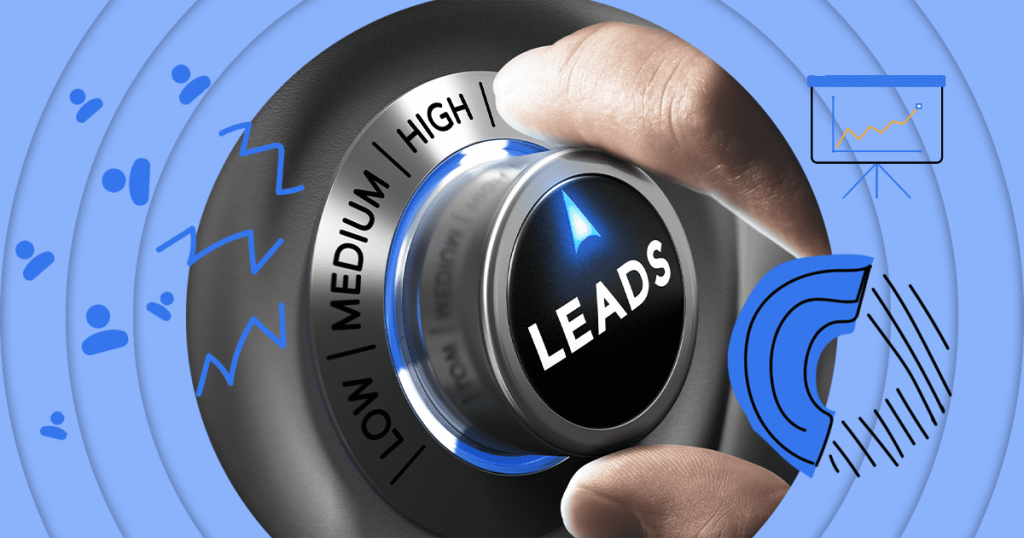In order to have a successful digital marketing program, you need to understand everything there is to know about your customers.
Building out buyer personas, tracking buyer behavior, moving customers through your sales and marketing funnels, and segmenting your audiences to personalize messaging are all keys to digital marketing success.
Another important factor to add to your digital marketing strategies is a lead source.
Leads refer to contacts that can be potential customers. Leads are the contacts that you market to so that they can become a customer down the line.
However, sometimes we have leads in our system that we don’t know where they come from.
A lead source refers to the manner and method through which a lead comes across your business and brand.
Understanding your lead sources and tracking the prospects that come through is essential to growing your business and getting the most out of your digital marketing efforts.
In this article, we’ll learn more about what a lead source is by looking at different types of lead sources.
We’ll also talk about why your lead sources are important and how you can identify and track each lead source.
- What is a Lead Source?
- Types of Lead Sources
- The Importance of a Lead Source
- How to Identify and Track Your Lead Sources
- Wrap Up
What is a Lead Source?
A lead source is the touchpoint through which a potential new lead first hears about your brand.
It’s the reason that someone will come to visit your website or want to learn more about the different products and services you offer.
Lead sources are what turn a member of your target audience into a potential customer.
Because an audience member has chosen to take a deeper look into your business and brand, you have successfully identified them as a target for further marketing efforts.
By being able to find the different sources that your leads are using, you can help learn more about what tactics work and what areas might need more work.
Types of Lead Sources
A lead source is any touchpoint that brings in customers. For many businesses, that means there are common digital lead sources that should be very familiar. These can include:
Email Campaigns
Email marketing can help get specific offers or target messages in front of new audiences. Because it is a direct form of marketing, you can get very specific details about the success of a campaign.
Virtual Events
Events can target a wider audience than your current customer base. By marketing your event as having important information for a specific industry, you can bring in more of your target audience.
Organic Search Results
Your organic search results are what appear on search engine results pages for specific questions or queries. When your organic search results are a lead source, it means that your SEO efforts are working as intended.
Blog Articles
Blog articles give detailed and valuable information about specific questions and topics that garner interest in your industry. When you have a successful blogging strategy, you can help get your content in front of new audiences.
Paid Ads
Pay-per-click ads and display ads are a form of paid advertising that targets specific demographic and audience segments. Because they aren’t followers on social media or current customers, you can get your message in front of different people.
Premium Content
Premium content refers to gated content offers that provide much more depth and detail than a blog post. The goal is to create a content offer that is worth giving contact information about. That can give you more qualified leads than other lead sources.
Social Media
Your social media marketing strategy is another lead source that tries to expand your audience. By marketing where your customers spend their time online, you don’t have to worry about new leads coming to you.
Reviews or Referrals
People like to know that others like them have had enjoyable experiences with a brand. Positive reviews or referrals of your products and services can help you stand out from the competition.
The Importance of a Lead Source
A lead source is incredibly important to seeing the impact and understanding the reach of your digital marketing efforts.
As a marketer, your job is to bring in new leads and prospects through digital marketing methods.
All your lead generation efforts are meant to put a lead source in front of as many different key audience members as possible.
When you identify and track your lead sources, you can see how successful they are.
That allows you to adapt your strategies as necessary to improve your efforts and meet your lead generation goals.
For example, if your email marketing isn’t reaching the right number of leads that you want, then you can identify that and take a step back to improve your tactics.
This also helps you get the most out of your ROI. If you are spending time, effort, and money on your digital marketing strategies, then you want to make sure that you get back what you put in.
If you don’t track the success of your lead sources, then you can risk losing money faster than you are getting new leads.
Determine Your Most Valuable Lead Source
When you know the number of leads coming in through your different sources, you can quickly determine which are the most valuable to your lead generation efforts.
When you know which lead source brings in the most prospects, you are able to invest more time and money into ensuring that lead source is successful.
You can also determine which lead sources need more work and whether or not you have a lead source that might not be worth operating.
After all, there’s no point in putting time, effort, and money into a lead source that isn’t going to bring you the results you need.
Improve Lead Management
Lead management refers to the process through which you nurture and manage your leads.
Knowing your lead sources is key to being able to manage the leads that come in.
That helps you gain the specific details of each lead and helps you personalize the buyer’s journey.
When a customer gets the right targeted messaging, you are able to more effectively move them through your marketing funnel so they convert into a customer.
How to Identify and Track Your Lead Sources
In order to understand which methods in your digital marketing strategy are the most effective, you need to be able to track and identify which lead source is performing the best, which needs more dedication, and which might not be worth the time and effort.
That means that it’s essential that you have a plan in place to identify and track lead sources.
1. Set Goals
When you have goals in place, you can tell which of your lead sources is meeting the expectation you set.
You don’t want to spend too much time and effort on a lead source that doesn’t bring in the leads you need.
By setting goals, you can determine whether your efforts are successful and identify which channels aren’t currently working for you.
2. Get the Right Tools
Tracking a lead source requires you to have tools by your side.
Trying to manually monitor your lead source numbers isn’t going to work.
By having your tools working for you, you can quickly get reports, data analysis, and lead generation analytics that help you understand more about each lead source.
3. Identify Each Lead Source
You don’t want to have a lead source slip through the cracks.
By identifying each lead source, you can know exactly where each lead is coming from. You can use tools to help you pinpoint the source of each lead.
This allows you to find which of your lead sources are converting leads into customers, which are bringing in leads that don’t convert, and what sources bring in the most qualified leads.
4. Try New Channels
After you’ve identified all your lead sources, you can find which channels you currently don’t have a presence on.
By testing out new areas, you can find additional lead source options that can bring in new leads for your business.
This allows you to target new audiences and see if there is a lead source that works well for your business that you haven’t experimented with yet.
Wrap Up
A lead source is the way in which new potential business is able to find your brand, products, and services.
When you don’t know your own lead sources, you can’t accurately manage your lead generation efforts.
By taking the time to invest in tracking and identifying your lead sources, you can improve your entire digital marketing process from new contact to conversion into a customer.
If you are a digital marketer who wants to know more about how you can increase conversions, check out our Lead Generation eBook!
You’ll learn many different tactics to improve conversions, like best practices, the most effective strategies, helpful tools, and tips on how to identify new opportunities for optimization.









